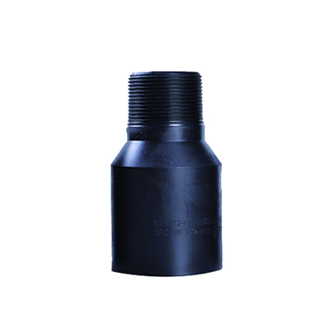- Afrikaans
- Albanian
- Amharic
- Arabic
- Armenian
- Azerbaijani
- Basque
- Belarusian
- Bengali
- Bosnian
- Bulgarian
- Catalan
- Cebuano
- Corsican
- Croatian
- Czech
- Danish
- Dutch
- English
- Esperanto
- Estonian
- Finnish
- French
- Frisian
- Galician
- Georgian
- German
- Greek
- Gujarati
- Haitian Creole
- hausa
- hawaiian
- Hebrew
- Hindi
- Miao
- Hungarian
- Icelandic
- igbo
- Indonesian
- irish
- Italian
- Japanese
- Javanese
- Kannada
- kazakh
- Khmer
- Rwandese
- Korean
- Kurdish
- Kyrgyz
- Lao
- Latin
- Latvian
- Lithuanian
- Luxembourgish
- Macedonian
- Malgashi
- Malay
- Malayalam
- Maltese
- Maori
- Marathi
- Mongolian
- Myanmar
- Nepali
- Norwegian
- Norwegian
- Occitan
- Pashto
- Persian
- Polish
- Portuguese
- Punjabi
- Romanian
- Russian
- Samoan
- Scottish Gaelic
- Serbian
- Sesotho
- Shona
- Sindhi
- Sinhala
- Slovak
- Slovenian
- Somali
- Spanish
- Sundanese
- Swahili
- Swedish
- Tagalog
- Tajik
- Tamil
- Tatar
- Telugu
- Thai
- Turkish
- Turkmen
- Ukrainian
- Urdu
- Uighur
- Uzbek
- Vietnamese
- Welsh
- Bantu
- Yiddish
- Yoruba
- Zulu
Understanding API Casing Sizes for Optimal Oil and Gas Operations
Understanding API Casing Sizes A Comprehensive Overview
When it comes to oil and gas drilling, the drilling process relies heavily on the integrity and functionality of casing pipes. Among the standards that govern casing design and sizing, the American Petroleum Institute (API) plays a pivotal role. Understanding API casing sizes is essential for drilling engineers, project managers, and anyone involved in the extraction of oil and gas. This article provides a comprehensive overview of API casing sizes, their significance, and how they are determined.
What is API Casing?
Casing is a series of steel pipes that are inserted into a drilled wellbore to provide structural integrity, protect the well from contaminants, and facilitate the extraction of oil and gas. The API standards ensure that the casing is produced to specific dimensions and material properties, ensuring reliability and safety during drilling operations.
API Casing Sizes Explained
API casing sizes are designated based on two key criteria nominal diameter and wall thickness. The nominal diameter is the outside diameter of the casing pipe, typically measured in inches. Common sizes include 4, 5, 7, 9 5/8, 10 3/4, and 13 3/8 inches. These sizes are standardized to facilitate compatibility between different manufacturers and ensure ease of use in the drilling process.
api casing sizes

Wall thickness is equally important as it affects the pipe’s pressure rating and strength. API casing is categorized into several weight classes, including light, medium, and heavy, which indicate the thickness of the casing wall. The most common weight classes are denoted in pounds per foot (lb/ft), such as 40 lb/ft or 60 lb/ft. Choosing the appropriate size and weight class is critical, as it influences the casing’s ability to withstand the high pressures encountered during drilling operations.
Significance of API Casing Sizes
The selection of the proper casing size significantly impacts the overall efficiency and safety of drilling operations. A casing that is too small may not be able to withstand the pressures encountered in deep wells, leading to catastrophic failures. Conversely, an oversized casing increases costs without added benefits. The right balance ensures optimal performance, safety, and cost-effectiveness.
Moreover, API casing sizes provide a systematic way for engineers to plan their drilling operations. Using standardized sizes streamlines the procurement process, reduces lead times, and ensures that everyone involved in the project is on the same page. This standardization is critical in an industry where delays can result in significant financial losses.
Conclusion
Understanding API casing sizes is an essential component of successful oil and gas drilling operations. The appropriate selection of casing size and weight not only guarantees structural integrity and safety but also promotes efficiency and cost-effectiveness. As the industry continues to evolve, adhering to API standards remains paramount to the successful and safe extraction of hydrocarbons from the earth. For engineers, project managers, and drilling personnel, a deep comprehension of API casing specifications is foundational to their work and contributes to the overall success of drilling projects. Whether it's adopting new technologies or refining existing processes, API casing sizes will always play a critical role in the continuity of safe and efficient drilling operations.
-
Tubing Pup Joints: Essential Components for Oil and Gas OperationsNewsJul.10,2025
-
Pup Joints: Essential Components for Reliable Drilling OperationsNewsJul.10,2025
-
Pipe Couplings: Connecting Your World EfficientlyNewsJul.10,2025
-
Mastering Oilfield Operations with Quality Tubing and CasingNewsJul.10,2025
-
High-Quality Casing Couplings for Every NeedNewsJul.10,2025
-
Boost Your Drilling Efficiency with Premium Crossover Tools & Seating NipplesNewsJul.10,2025







